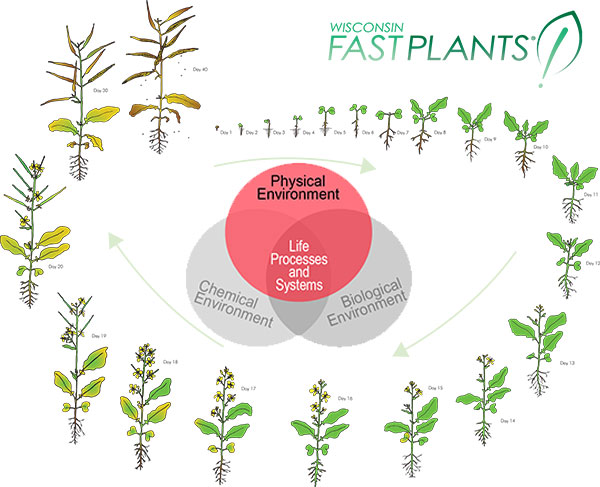Growing healthy Fast Plants is easy if you understand how the environment can affect growth and development. Three broad categories of environmental factors influence how an individual plant matures through its life cycle: 1) the physical environment, 2) the chemical environment, 3) the biological environment. This post is part of a series explaining how key environmental factors–physical, chemical, and biological–can impact plants, Wisconsin Fast Plants in particular.
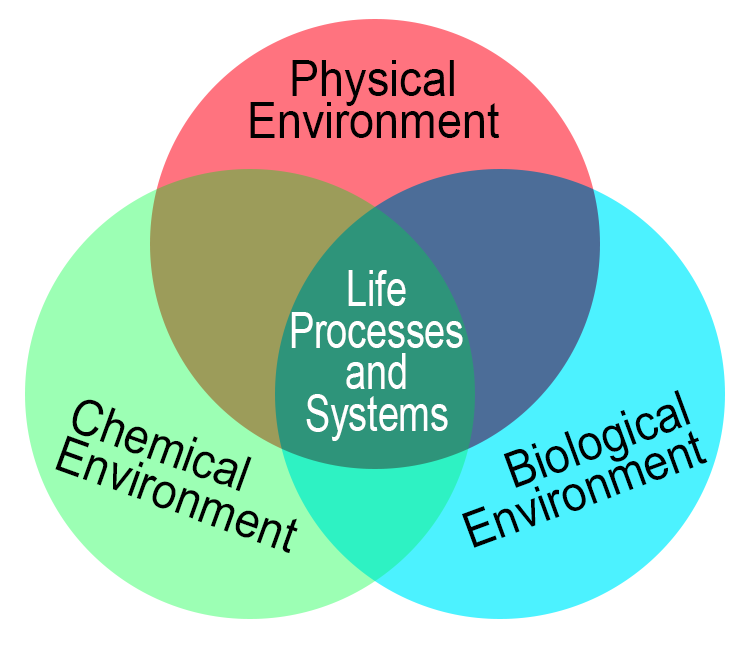
Growing Environment Factors
Our website describes what ideal growing conditions are for growing Fast Plants. These conditions come from more than 25 years of science and engineering practices, working with Fast Plants. Sometimes you may want to keep your Fast Plants growing in an ideal physical environment, which allows you to test variables in the chemical or biological environments. Or perhaps, you may want to test how changing a factor in the physical environment affects the way Fast Plants germinate, grow, or reproduce. Whether you want to grow Fast Plants in ideal conditions or you’re designing an experiment, this post can help you understand three factors in the physical environment that are easy to control:
- light
- temperature
- root medium (e.g. soil)
Physical Environment Factors
Light
Appropriate lighting is likely the most critical factor in the physical environment for healthy plant growth and development. To make sure Fast Plants get the light they need:
- Grow Fast Plants under constant fluorescent or full spectrum lighting. Be sure to make arrangements (with custodians, etc.) so lights are not turned off at any time.
- Ideally, keep the growing tips of the plants about 5cm (~2″) from the lights. This is particularly important during the first week after germination; therefore, we typically keep newly emerging Fast Plants very close to lights until the first true leaves emerge.
- Use aluminum foil to amplify and balance light distribution in the space where you’re growing Fast Plants. Aluminum foil lining or “curtains” work well for this. However, you must monitor temperature; closing off your growing space with foil can reduce air flow and overheat your plants.
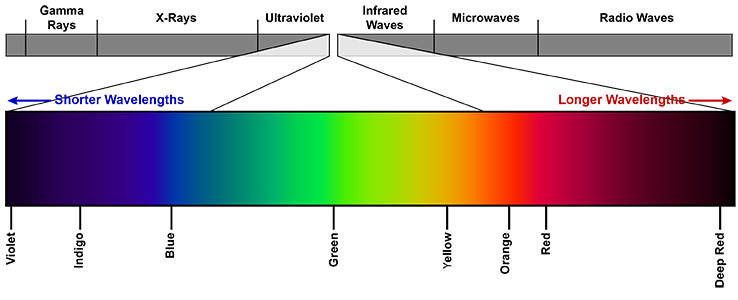
Plants use energy from various regions of the visible spectrum to perform a number of functions essential to their growth and reproduction.
Additional resources for lighting
DIY Grow Lights for Fast Plants
Fast Plants.org – How to Grow – Lighting Systems
Temperature
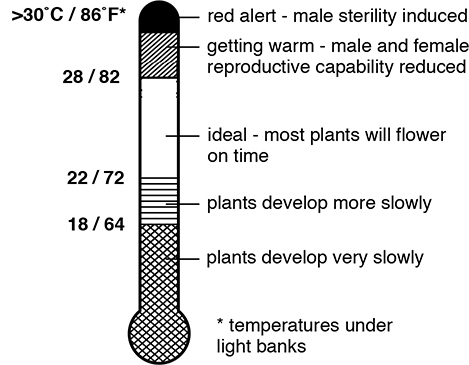
Air and soil temperature are critical factors in the physical environment that influence plants’ growth rates. Consider the difference in how quickly grass grows during hot mid-summer days while quite slowly in the last chilly days of fall. Similarly, the growth rate of your Fast Plants–how quickly they germinate and begin flowering, for example–are influenced by temperature.
Temperatures that are too high or too low can affect the timing of developmental events such as seedling emergence, days to flowering, and seed pod development. Optimal temperature for Fast Plants is between 72°F to 82°F (22°C and 28°C). Although Fast Plants can tolerate cooler temperatures than many plants, their development slows at temperatures below 72°F. Temperatures above 82°F can cause spindly stem development and sterile pollen.
Soilless Root Medium
Soil or other media that your Fast Plants grow their roots into is part of their physical environment. Consequently, the type of medium used affects what nutrients are available, the water-holding capacity, and root aeration (see post on the Chemical Environment).
The first step in successfully growing Fast Plants is preparing the appropriate planting medium. Fast Plants do not usually grow well in potting soil of soil from the garden. Either purchase a commercial soil-less potting mix (e.g. a nutrient-free seed starter mix) or mix your own: 1 part Peatlite™ to 1 part coarse or medium vermiculite.
When planting your Fast Plants, the potting mix needs to be lightly moistened because most mix comes packaged so very dry that it actually repels water until it has had moisture mixed into it.
The VOLUME of root medium that Fast Plants have to grow in is another important consideration. Fast Plants were selected to grow well in extremely limited soil volume, as a result, it is easy to have quite large populations (a large sample size) indoors, in a relatively small space. While Fast Plants can literally grow in a bottle cap (as pictured) this produces a small plant, because the size of the plant above the soil is proportional to the size of the root system in the soil.
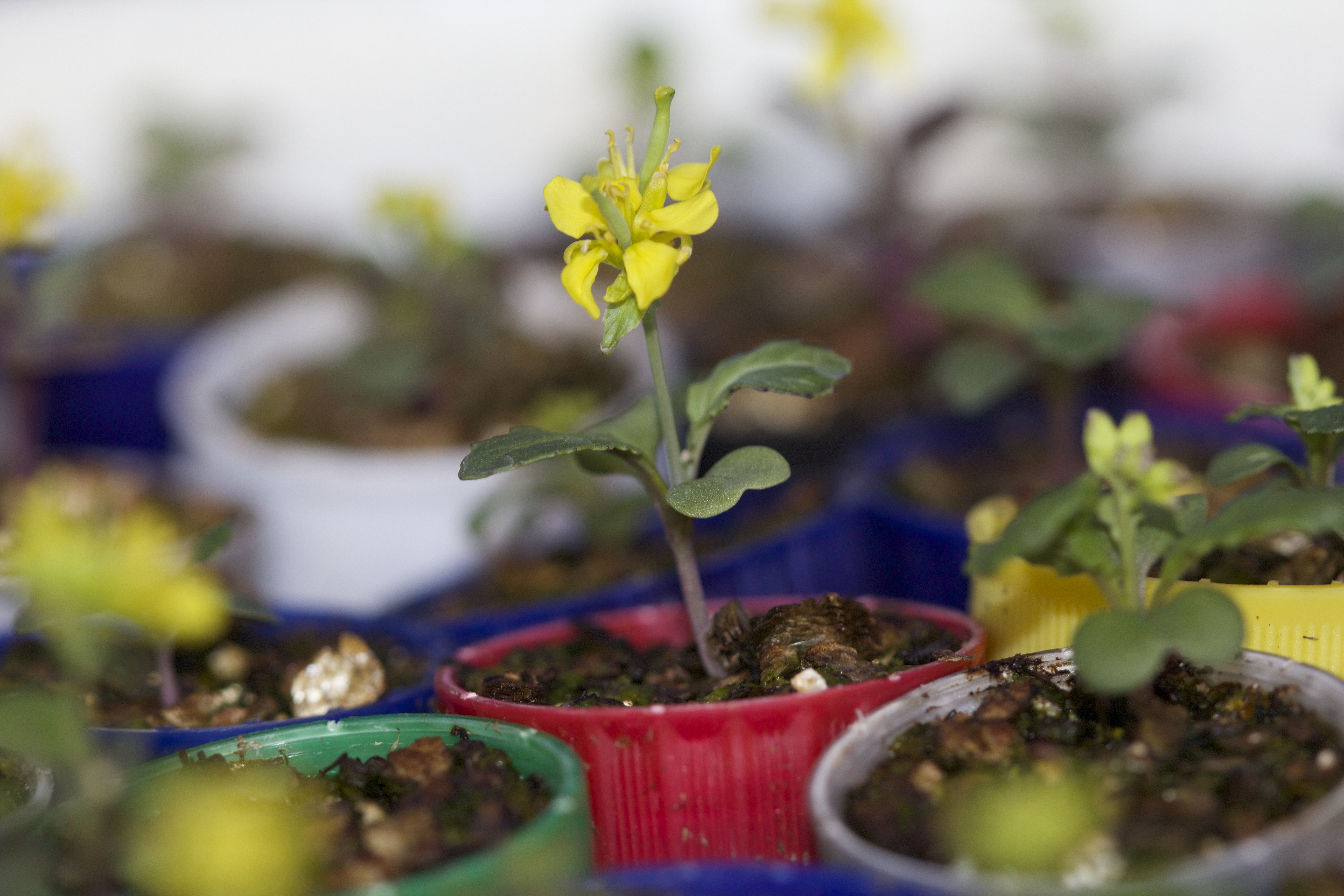
14 day old Astroplant in Bottlecap
The Fast Plants video on growing systems describes three different, recommended growing systems that have various soil volumes.
Thanks for reading! Be sure to check out the posts focusing on factors of the chemical environment and biological environment!

